Meet Hårek Stranheim, the Man Who Dreamed up the Norseman Xtreme Triathlon
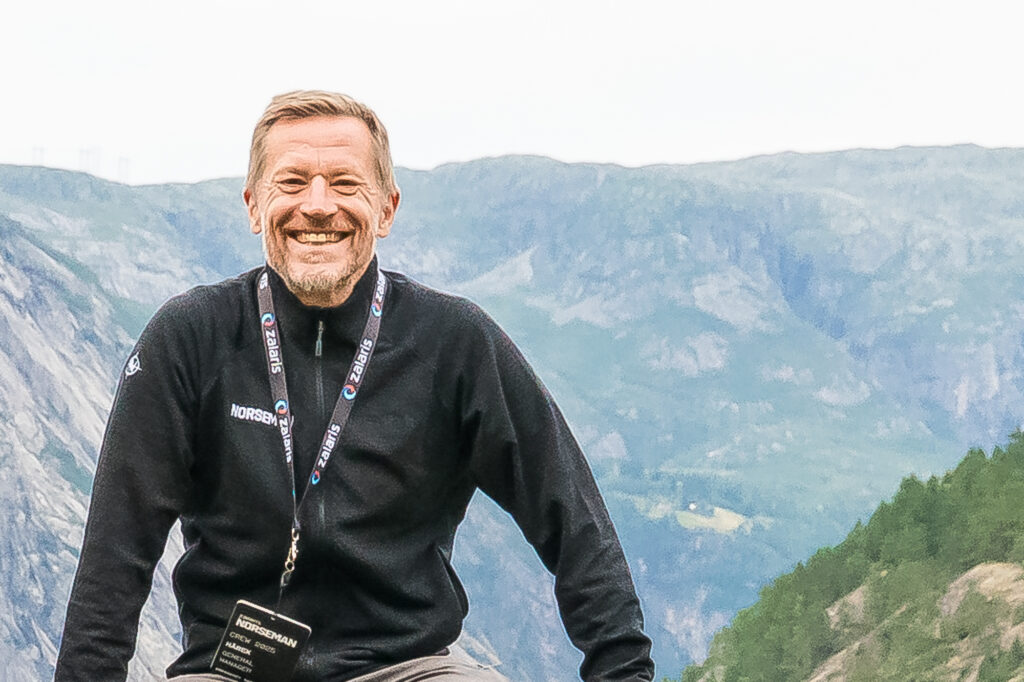
Just a few years before the first Norseman Xtreme triathlon in 2003, Hårek Stranheim figured the number of Norwegians doing full-distance races had dwindled down to about 10.
“I knew them all personally,” Stranheim says. “I wanted to restart the sport in Norway, and I thought what was needed was a good event.”
For years Stranheim had travelled to Kalmar, Sweden, to compete in the full-distance race there (that race started in 1994 and would eventually become an IRONMAN race in 2012), and enjoyed “the fantastic event with the impressive surroundings and organization.”
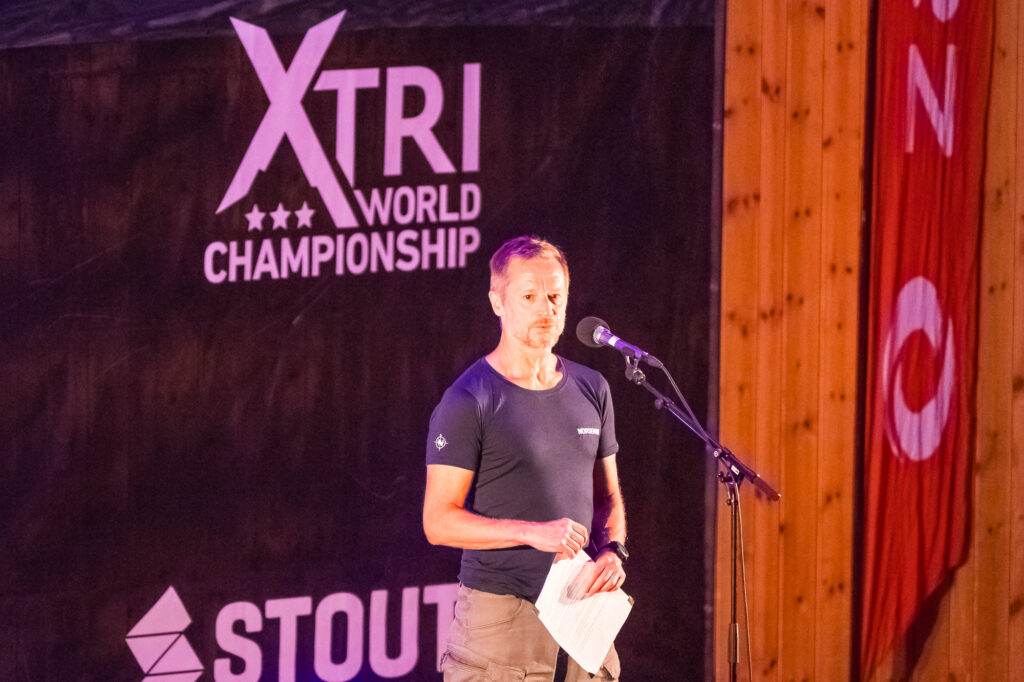
Hårek Stranheim speaks at the Norseman 2025 pre-race meeting. Photos: Kevin Mackinnon
“I just loved the race in Kalmar, so I wanted to copy that competition in Norway,” Stranheim says. “I wanted to find somewhere in Norway where you have warm water, and a flat and fast track, and good roads in a nice city like Kalmar, and you just can’t find it. There is no such place in Norway. So, I thought, if you can’t make a good copy, then just do something completely different. So what is the opposite of what they do in Kalmar, which is pretty flat? The opposite is just what we have in Norway – it is mountains and hills and rough nature and rough weather.”
“So my idea was to create a race that would be like a tourist brochure,” he continues. “To find a course in the beautiful nature that is hilly and mountainous.”
Stranheim’s vision has very much become a reality. The Norseman Xtreme Triathlon now serves as the world championship for the XTRI World Tour, with over 6,000 athletes signing up for the lottery every year in hopes of winning an exclusive spot on the start line that includes 250 competitors. (This year’s race featured 259 starters.)
Finding Eidfjord
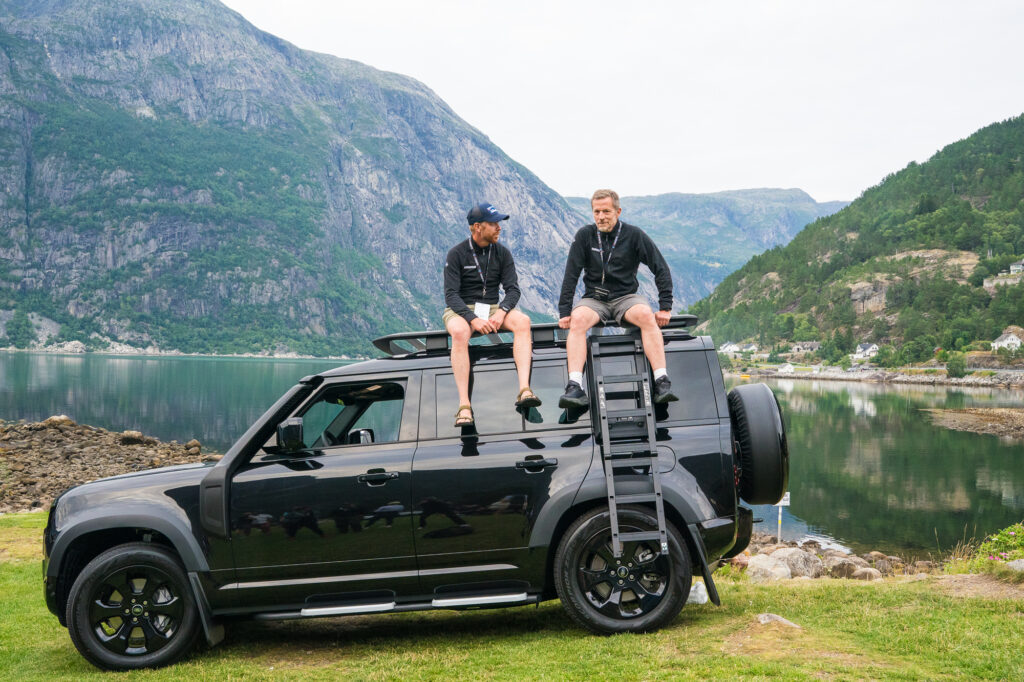
Stranheim and race director Fredrik Mandt at a pre-race function in Eidfjord with the Hardanger Fjord in the background.
Back in the early 2000s, Stranheim’s first task was to find a decent spot to swim. At the time he was dreaming the race up, most wetsuits listed 15 degrees Celsius as their lower limit, which meant that anything north of the Hardanger Fjord would be too cold. Which is how the race ended up starting in Eidfjord, the small village at the end of the Hardanger Fjord. Once he checked out a map, Stranheim started to figure out where the bike and run courses should go from there.
“I would prefer to go to my home mountain, Gaustatoppen, because I lived in this county, and Gaustatoppen is kind of my holy mountain,” he says. “And the mountain even has a lift and a train (which runs through a tunnel deep in the mountain), which means that you could bring people back down.”
His initial measurements on a map indicated that the bike and run legs should get close to the correct distances to make up the long-distance race. Stranheim figured the courses would be slightly short, but in fact they were almost exactly correct.
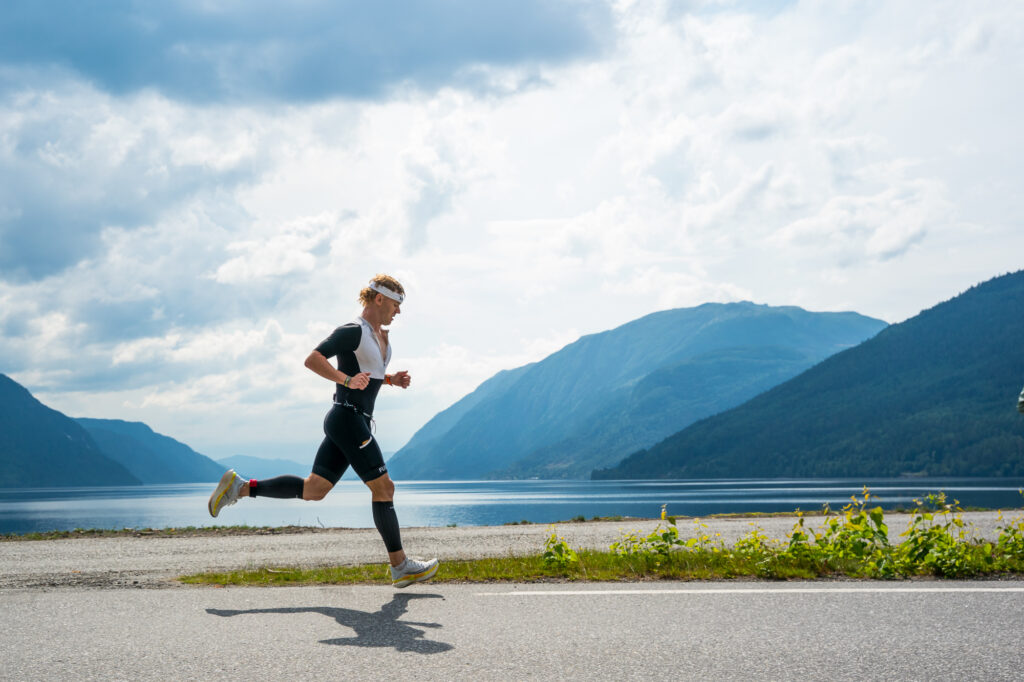
An athlete starts the run – organizers were thrilled to find that the logical place for T2 was almost exactly 180 km from T1.
“When we measured it with professional equipment, the bike leg was 50 meters short and the run leg is 30 meters short,” he says. “Which means there are probably no other events whose distance is so accurately measured. But that was just a gift from nature. We were prepared to do loops or figure out some way to add an out and back.”
Fitting in to Norwegian Culture
It didn’t take long for Norwegian triathletes to embrace the event. Over the years hundreds of local athletes have taken on the challenge of the Norseman race as their first long-distance event. For Stranheim, this shows how much the race embodies Norwegian culture.
“I think it is a very Norwegian event, built on a culture that is based in nature and very rough country to survive in,” he says. “I come from fishing families on both sides – one from up north and the other in the south. Life was hard. They combined farming and fishing all year through very rough conditions. Life wasn’t easy. It was cold, it was difficult. We (Norwegians) love outdoor life. We love expeditions. People who do expeditions are national heroes, and I would say that for a normal modern person who has an office job and lives an ordinary life, Norseman isn’t a small expedition, it’s a weekend expedition because its hard and unpredictable and you are exposed to proper weather (ed. note: read incredibly cold, wet and windy!) like we experienced at the finish line yesterday.”
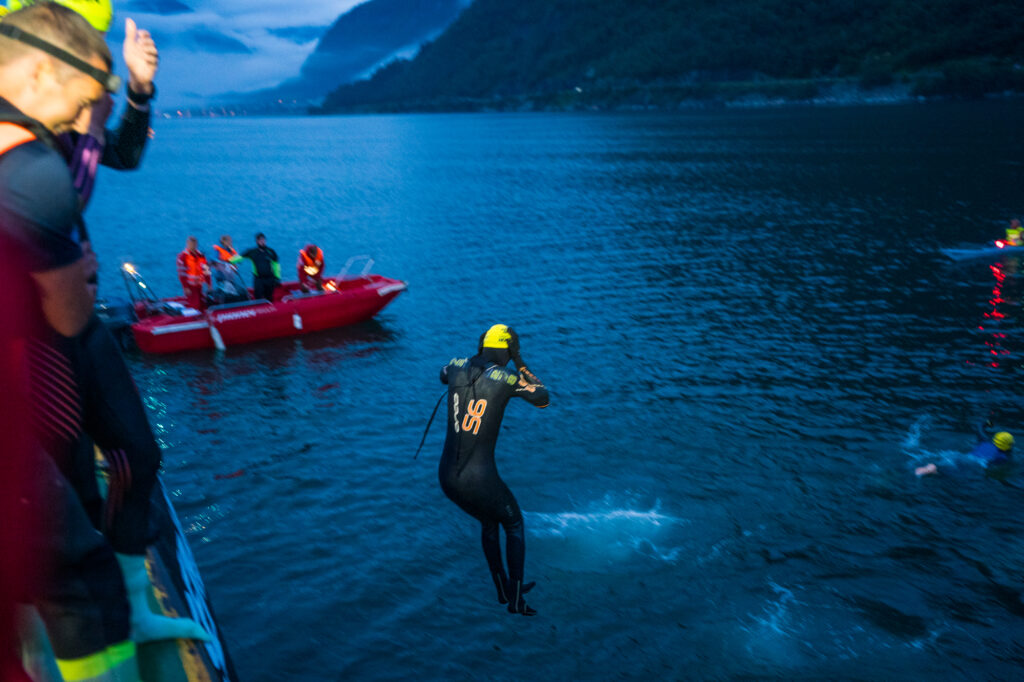
Athletes jump off the ferry before the swim start.
For Stranheim the event provides a graphic representation of Norway.
“With the ferry out in the fjord … but also all the unpredictability about the conditions and weather,” he says. “And the travel between the different weather systems, which means that you will very often have summer and winter on the same day.”
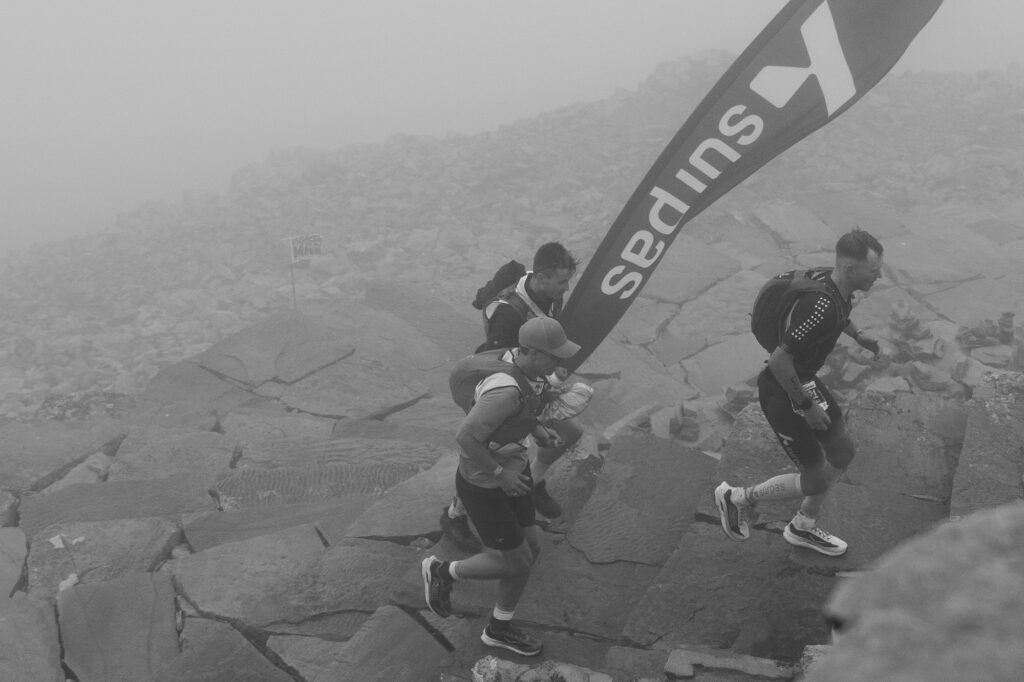
Kristian Grue runs through the rain up the final few steps before winning this year’s Norseman race.
Stranheim himself embodies that Norwegian toughness. He competed in the first race and, once he reached the top of Gaustatoppen, he took over at the finish line, sending his wife and sister back down to the bottom of the hill with their kids while he welcomed the rest of the finishers across the line.
That year there were 21 athletes in the race, a number Stranheim was happy with.
“I was very happy with 21,” he says, “Because that means it was a good first year event and a good test. In a country with 10 people doing full distance, we more than doubled the number.”
Support Crews
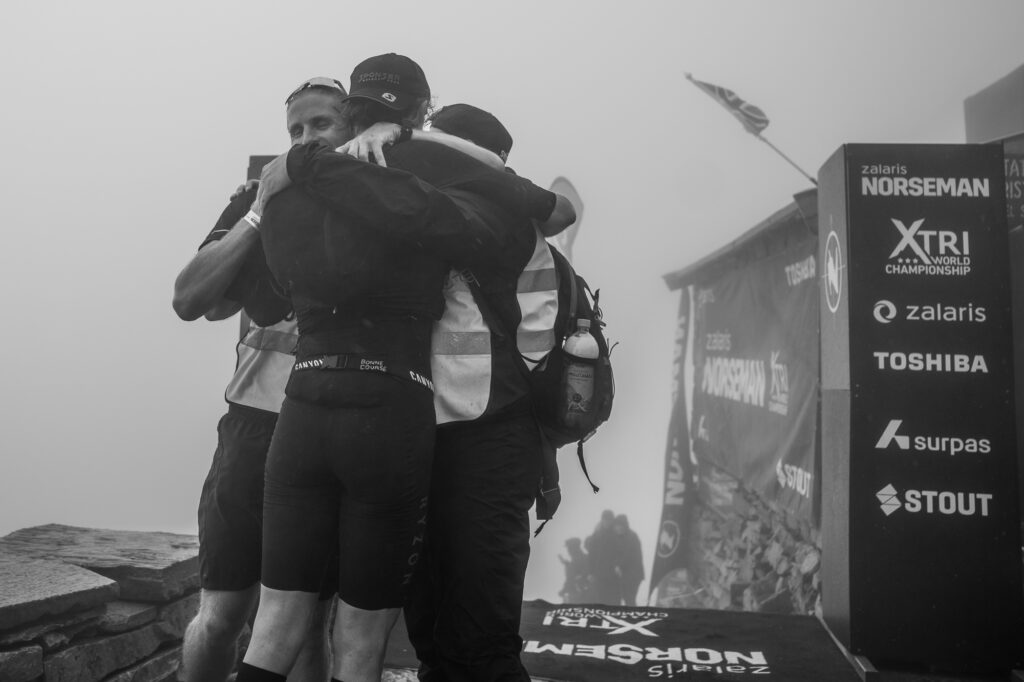
As another particularly Norwegian component to the race, Stranheim was determined that athletes complete the race with the support of a team.
“I think that what is typically Norwegian is that we had respect for the basics of triathlon, but we didn’t obey the rules,” he says. “We bent the rules and made our own, but only to the extent that it’s necessary to have this event, which means that we have to have the support, for example. I think that doing this event with your own support, not with aid stations, is very important for the experience of the participants, together with their support, because there is something genuinely beautiful about people doing things together – someone to have the experience to receive support and for others to give support, and they are equally important.”
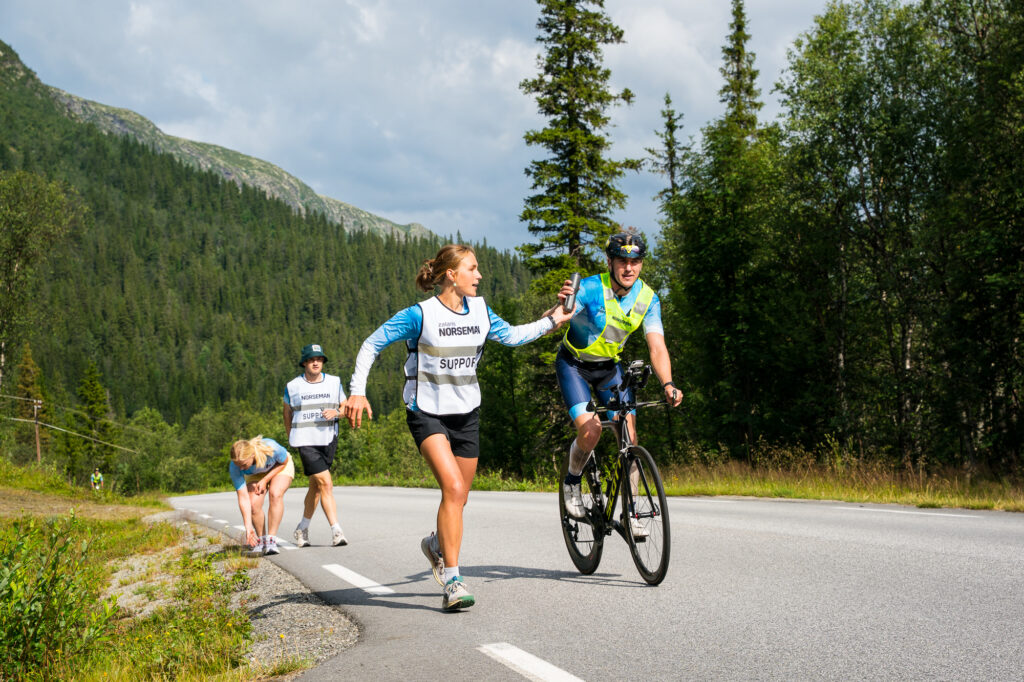
Inspirational Stories
Stranheim admits that he was always optimistic that the Norseman race would be a success, but feels there remains a lot more potential for the race to continue to grow.
“It’s still early – we’ve been here less than 25 years,” he says. “I think that we are in a good spot right now, but I don’t see any limitations on what we could become in another 25 years. I think we have an opportunity to create an event that offers … the potential to inspire … Every participant has their own story, their own reason to do it and there are some really true, truly strong, life stories out there, and for some people being here and doing the event is very important and it’s not about sports, I think it’s about life.”
As thrilled as Stranheim is with the race he created, neither he, or current race director Mandt, are resting on the event’s laurels. After taking a break from the event for almost a decade, Stranheim returned to the event management team three years ago with the vision of eventually making the Norseman Xtreme Triathlon “the Tour de France of triathlon.”
No matter how much bigger the race gets (in terms of global recognition that is – Stranheim and Mandt are clear that the race is at capacity in terms of numbers), those of us who have seen the Norseman up close will quickly acknowledge that it is a race like no other. Stranheim’s vision has created an entirely new class of triathlon races, events that, in many ways, bring the sport back to its roots as an athletic challenge.
Or, in the Norseman’s case, as a weekend expedition that offers lots of bragging rights back at the office on Monday morning.




One of the nicest men you will meet. Has time to talk to anyone and is extremely supportive and visible around race weekend, especially at the mountain cut-off. Great to see him back involved and he embodies what Norseman is about.